Nomura Individual Investor Survey
Download → PDF
(1) Nomura I-View Index comes in higher than previous survey at 28.6
The Nomura Individual Investor Market View Index (Nomura I-View Index), based on respondents' three-month outlook for share prices and calculated by subtracting the percentage of responses for "fall" from that for "rise," came in at 28.6 in September, up 27.4pt versus the previous survey. The Nikkei 225 reference level (4 September 2023 close) was 32,939.18, up 721.75 versus the previous survey (5 June 2023 close of 32,217.43).
The combined percentage of respondents expecting the Nikkei 225 to rise over the next three months was 64.3%, up 13.7ppt from 50.6% in the previous survey. The percentage of respondents expecting a "rise of about 1,000 points" was up 12.5ppt versus the previous survey at 39.4%. The percentage of respondents expecting a "rise of about 2,000 points" was up 1.4ppt at 15.1%, while the proportion responding with a "rise of more than 2,000 points" fell 0.2ppt to 9.8%.

The proportion expecting a "fall of about 1,000 points" rose 3.5ppt to 21.9%. The proportion expecting a "fall of about 2,000 points" was down 4.2ppt at 7.5%, while the proportion expecting a "fall of more than 2,000 points" was down 13.0ppt at 6.3% (Figure 2).
Fig. 2: Outlook for Nikkei 225 during the next three months
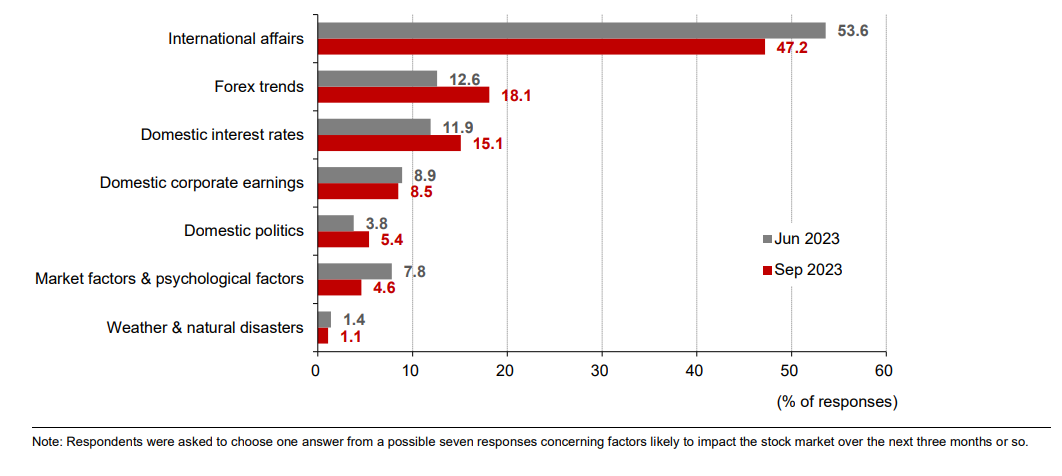
(2) Stronger focus on forex trends and domestic interest rates
Respondents were asked to select the factor most likely to affect the stock market over the next three months. The percentage selecting "forex trends" rose 5.5ppt versus the previous survey to 18.1%. The response rate for "domestic interest rates" increased 3.2ppt to 15.1%, while the percentage for “international affairs” fell 6.4ppt to 47.2%.
(3) Appeal of financials, pharmaceuticals sectors up, appeal of consumer goods, capital goods/other sectors down
On the outlook for sectors over the next three months or so, we calculate a diffusion index (DI) for each sector by subtracting the percentage of respondents viewing it as "unappealing" from the percentage of respondents viewing it as "appealing." The DI for financials increased 10.5pt to 1.8. The DI for the pharmaceuticals sector also rose, by 3.6pt, to 0.0. Meanwhile, the DI for consumer goods declined 4.3pt to -8.0, and the DI for capital goods/other declined 4.0pt to -0.3 (Figures 4 and 5).
Fig. 4: Investment appeal by sector
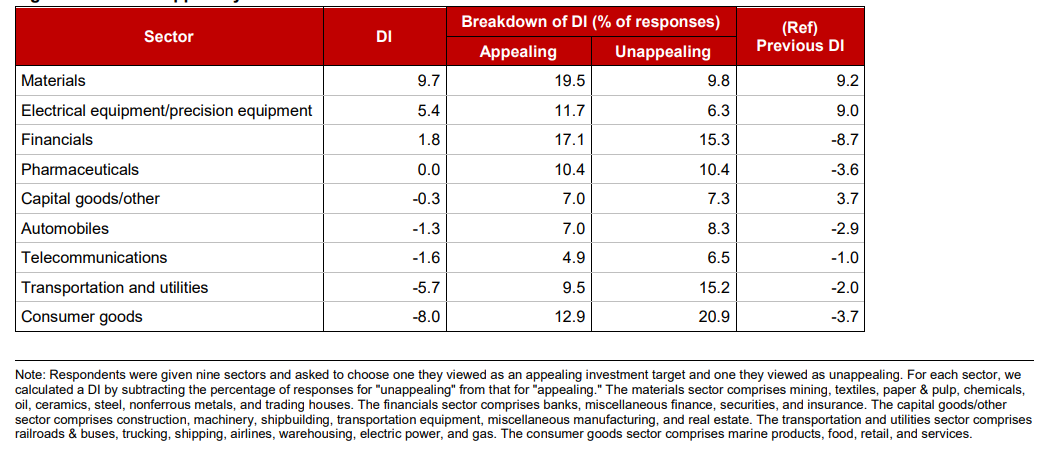
Fig. 5: DIs for selected sectors
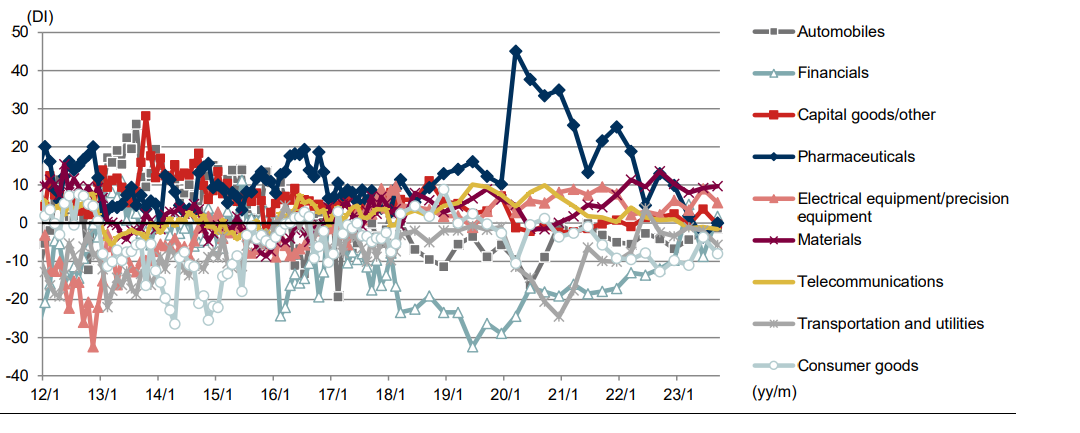






















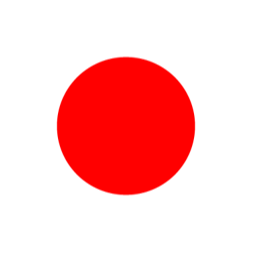
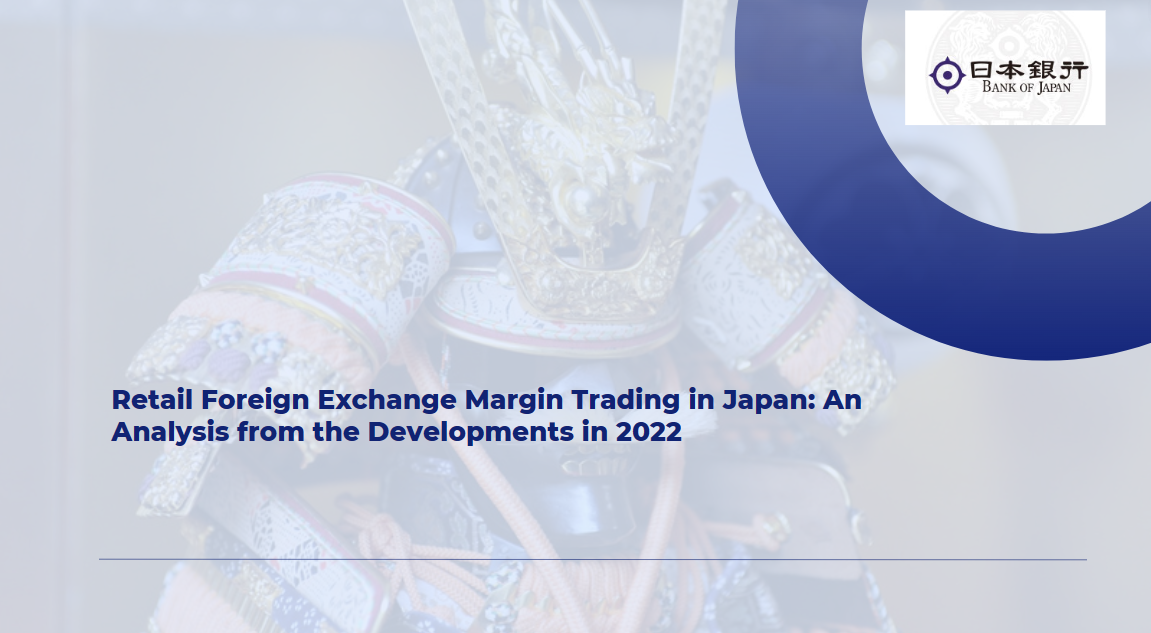
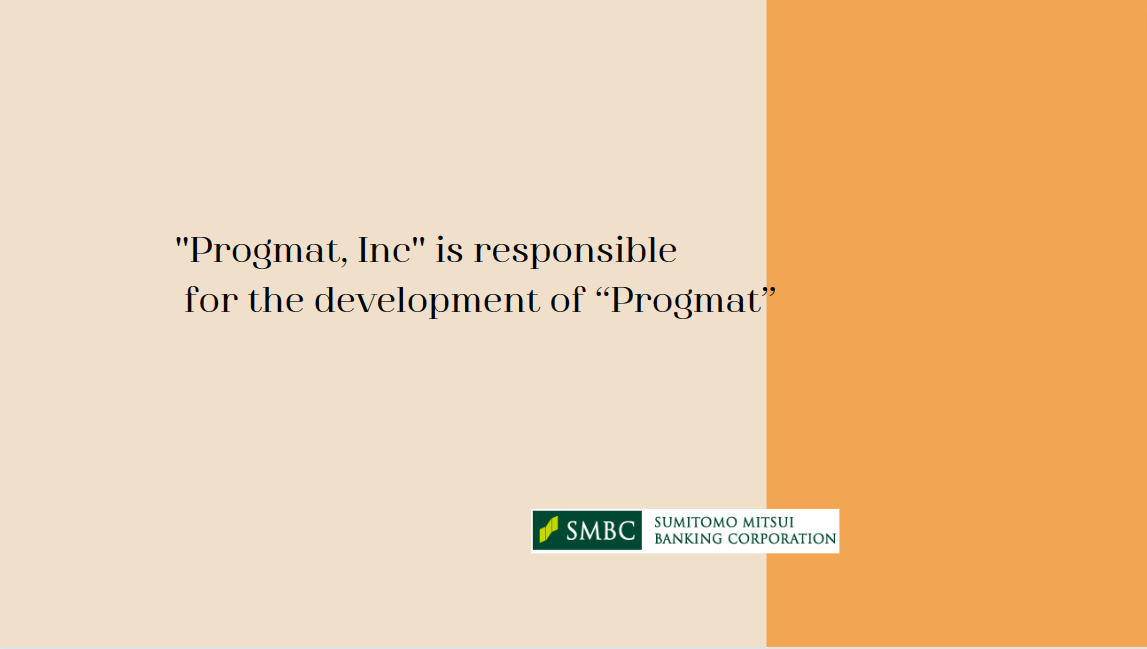
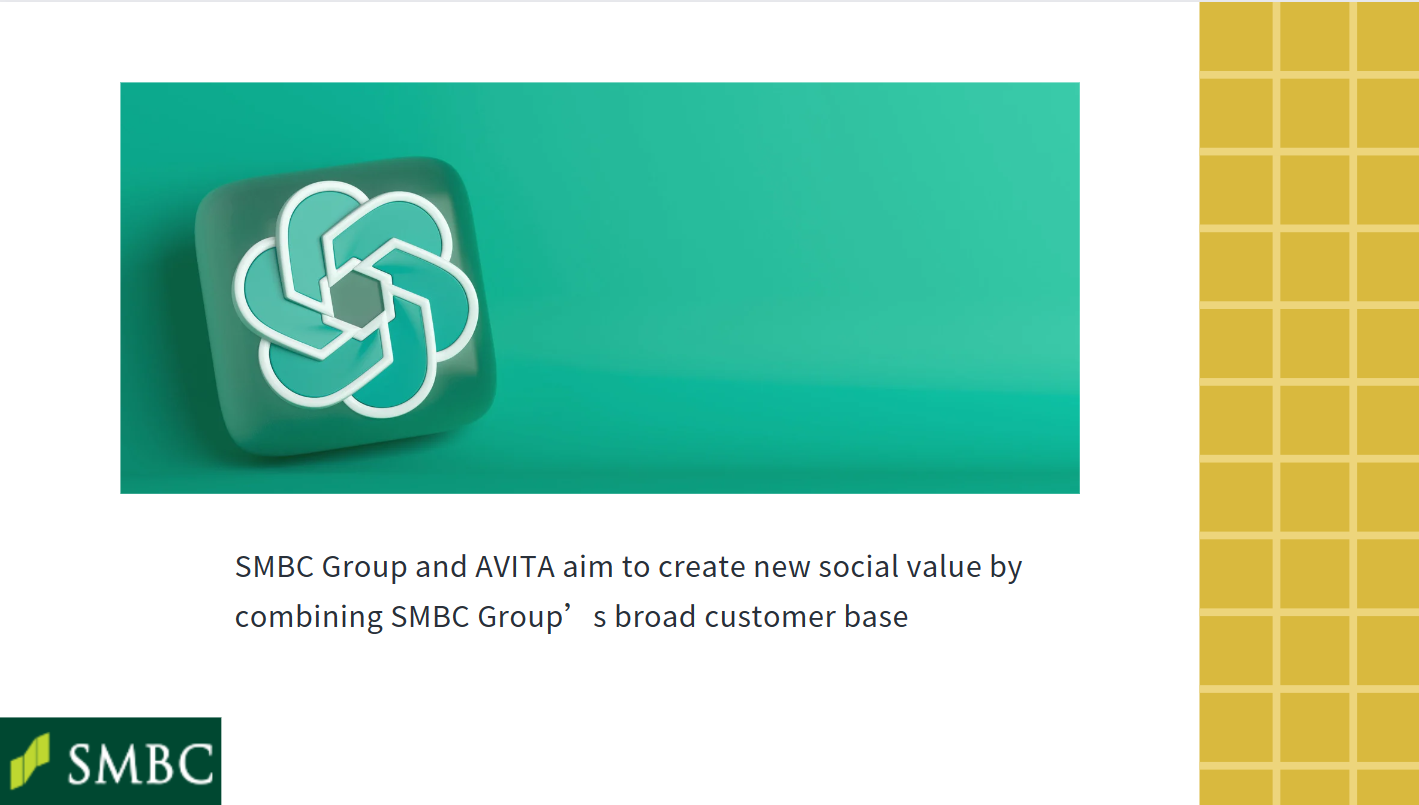





























First, please LoginComment After ~